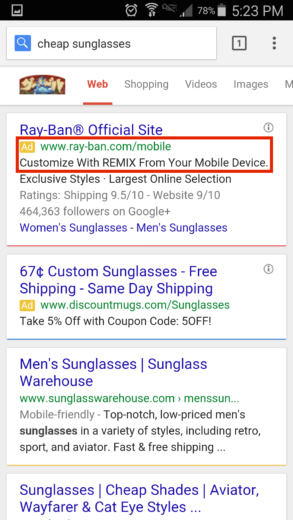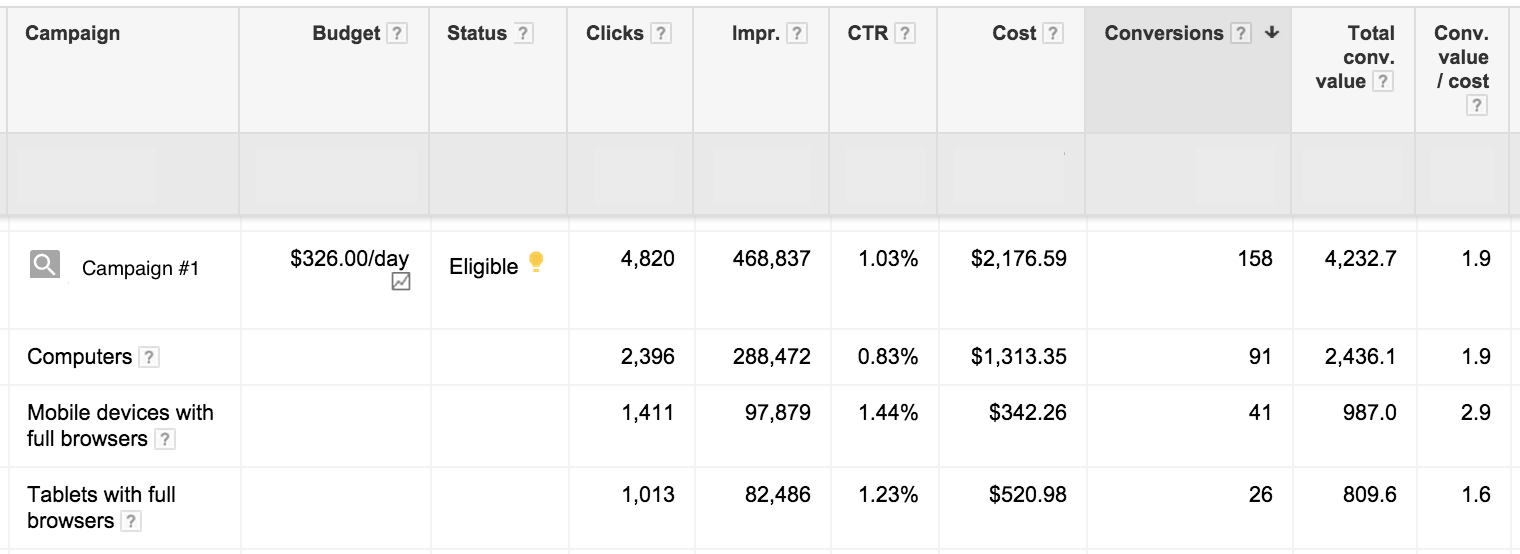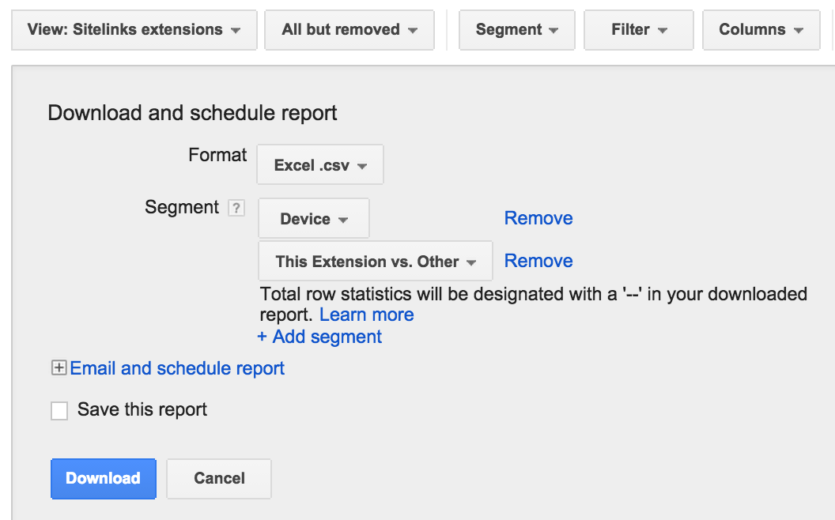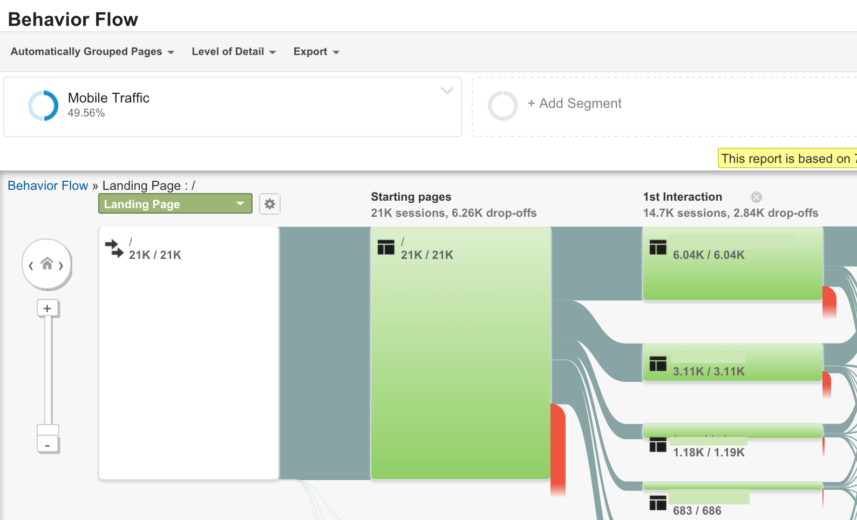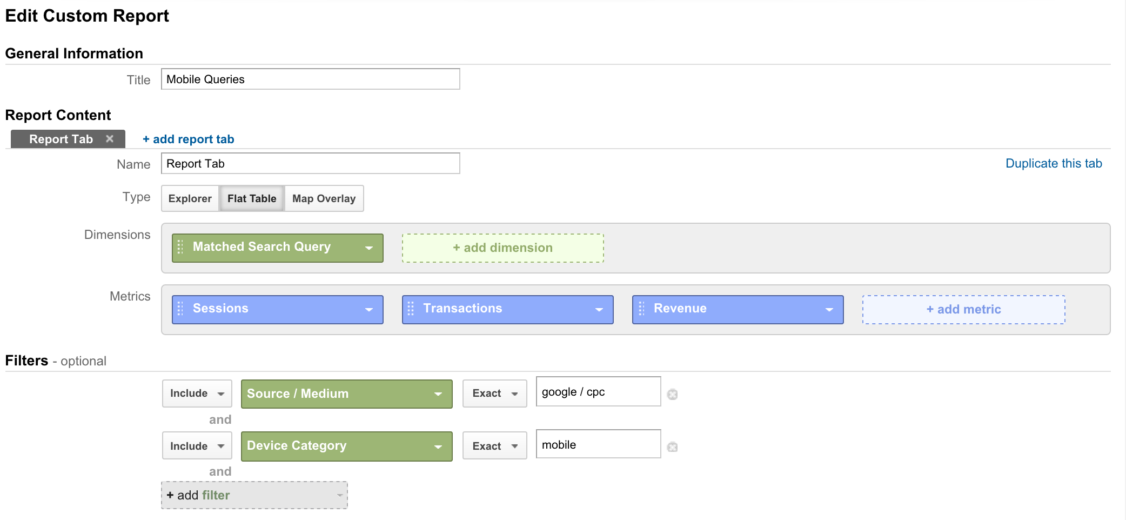Question: Do you have a solid mobile strategy in place for your PPC efforts? If not, you should carve out some time to think about it and nail down an action plan to capture this ever-growing market in the PPC space.
We’ve talked about micro-moments and what that means for advertisers, but we didn’t really talk about the specifics of putting together an overall strategy. Behold my 5 simple steps for putting together a mobile strategy.
Step 1: Evaluate Your Current Mobile Presence
Take a look in your account and audit any mobile ads you have running. Then do a few Google (or Bing) searches from your phone to both scope out the competition and see what your ads (and/or organic listings) look like.
Are your competitors using mobile language such as “shop from your phone” or DisplayUrl.com/Mobile? Take note of these things. The real estate on the mobile SERPs is precious, and users will definitely take note of whichever ad sticks out the most at the top of the page.
While you’re on your phone checking out the mobile competition, go ahead and check out your own site. What does it look like? Are the buttons big enough to press with your fingers? Is text easy to read and images clear? Remember that this experience is potentially the first interaction a user has with your brand. First impressions matter, people.
Another aspect of mobile presence that can be overlooked is whether or not your brand is showing up on the most relevant platforms. For example, you might be doing okay in Google and Bing, but if a large segment of your target market uses Facebook, you might want to highly consider testing out a few Facebook campaigns.
Step 2: Evaluate Your Current Mobile Performance
This is where you’ll want to take your current campaigns and segment by device.
In this particular campaign, mobile devices have a higher ROAS than both computers and tablets. While mobile is performing better, the main revenue driving ad group in this campaign doesn’t have mobile specific copy being tested apart from desktop. This provides a great opportunity to improve performance through mobile ad testing.
Note: Don’t forget sitelinks! I recommend downloading your sitelink data with “This Extension vs. Other “and “Device” as segments:
Then throw the data into a pivot table in Excel to see which sitelinks have good mobile performance, or are generating the most mobile clicks.
Step 3: Dig Into Google Analytics To Evaluate Mobile Behavior
There are so many ways to view data in Analytics, so feel free to use whichever report you like best. Let’s take a look at some fun places to look in Analytics.
Behavior Flow
Benchmarks
Custom Reports (mobile queries)
This report will help you get a feel for what users need at the precise moment they’re searching from their phone. Were they prompted by a problem that popped up? How are queries different on mobile devices than desktop searches?
Step 4: Timeline And Action Plan
Now that you’re more familiar with how your target audience interacts on mobile devices and how the competition stacks up, it’s time to create an action plan and a timeline. This might seem daunting, but don’t worry, all of your hard work in the previous steps will pay off.
Strategy
This should be your overarching plan for capturing relevant mobile traffic.
- What are the major pain points of users searching from their phones? Are they searching for an immediate fix to a problem?
- What’s your mobile site look like? This might need to be optimized first before you think about running mobile ads. A bad mobile experience will leave a bad taste in a potential customer’s mouth.
- How are you bidding on mobile within Google/Bing/Facebook/etc?
- If you’re only running mobile on Google and Bing, does it make sense to expand to mobile-friendly platforms like Facebook?
Action Plan
Come up with a few action items that correspond to each piece of your strategy.
- Write mobile preferred ad copy & sitelinks with relevant messaging from your competitive research
- Adjust mobile bid modifiers
- Optimize your mobile site
Step 5: Continuous Optimization And Testing
Out of all the things your mobile strategy should be, it should definitely not be “set it and forget it.” We already know that the mobile landscape is almost always changing, thus you should frequently check in on how things are going.
When you are checking in, be sure to evaluate:
- Your mobile strategy overall
- Does this still make sense given the current landscape?
- If you’re driving mobile click-to-calls, do you have the support necessary to handle all the calls?
- Is your site still performing well on mobile devices?
- Mobile performance
- Do your mobile bid modifiers still make sense?
- Have there been any big changes in mobile performance?
- If yes, take a look in Analytics for insight
- Check how your mobile ad copy is performing, and always be testing!
Closing Thoughts
Even if running mobile ads doesn’t make sense for your business right now due to the lack of a mobile optimized website, you should keep it on the back burner for the future. Avoid sending traffic to a site that will cause users to bounce right away and never come back. Once you do decide to run mobile ads on the platform of your choosing, make sure you’ve thought through your strategy and that it makes sense. Finally, test test test! Test targeting, ad copy, messaging, landing pages, the works.



